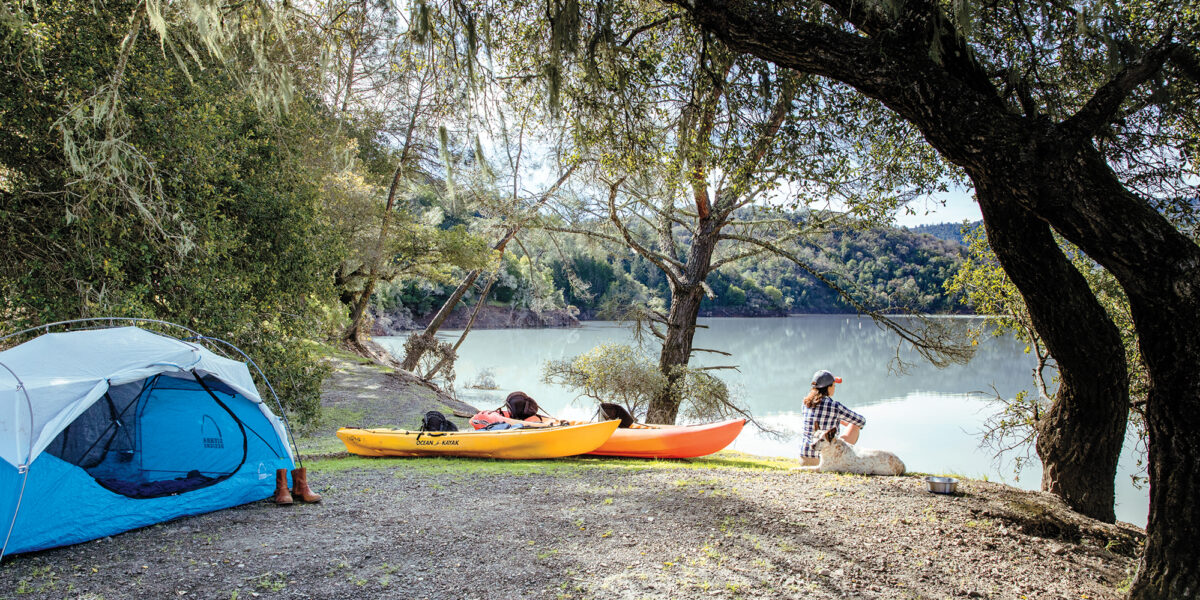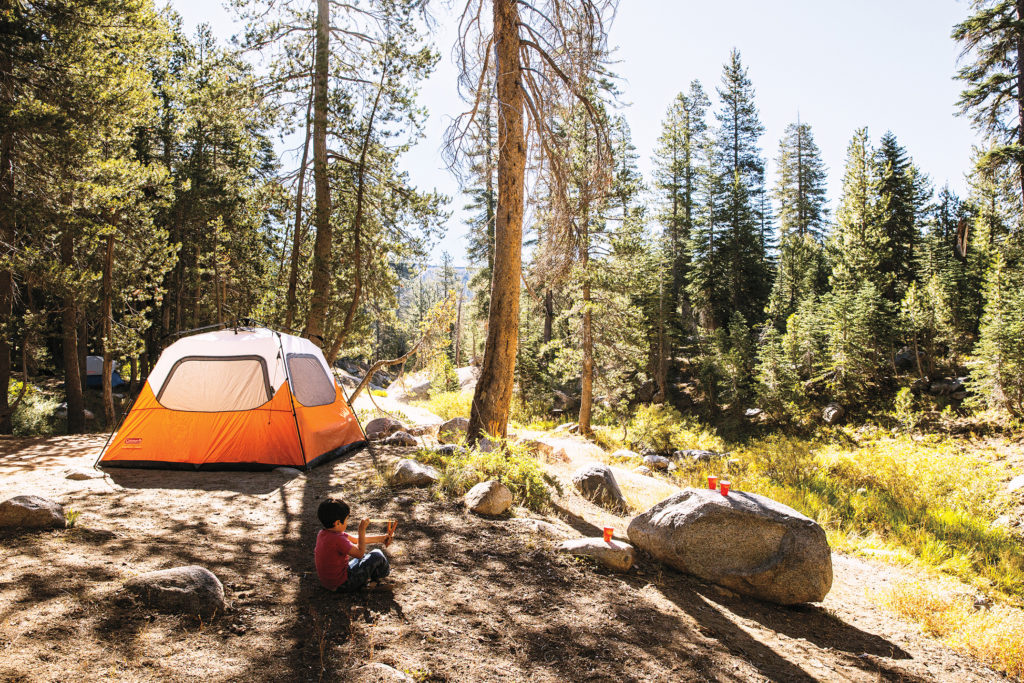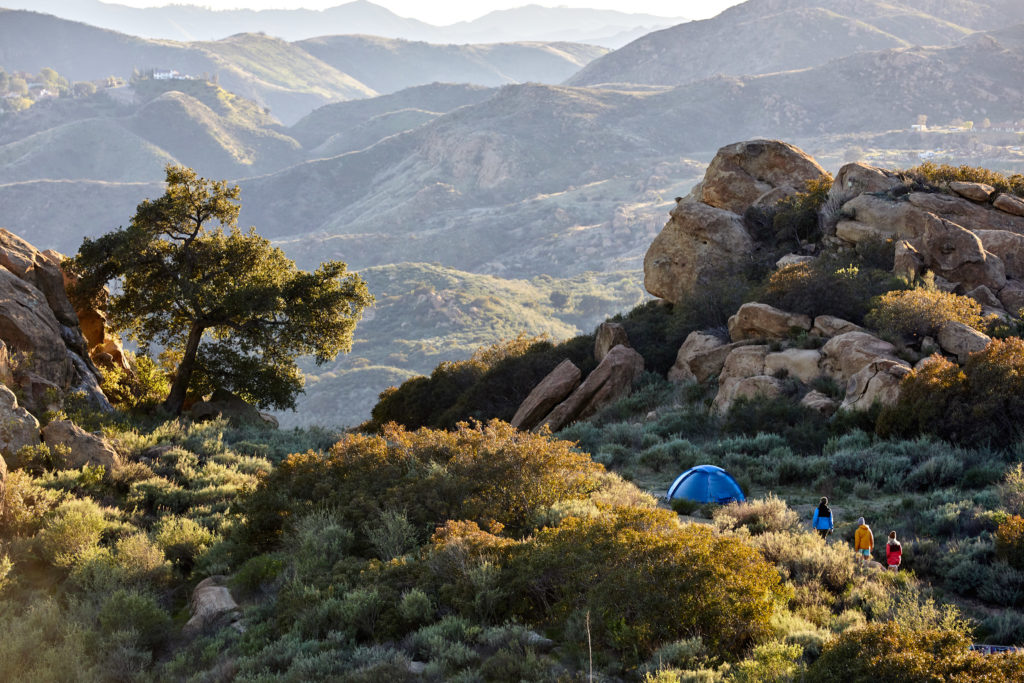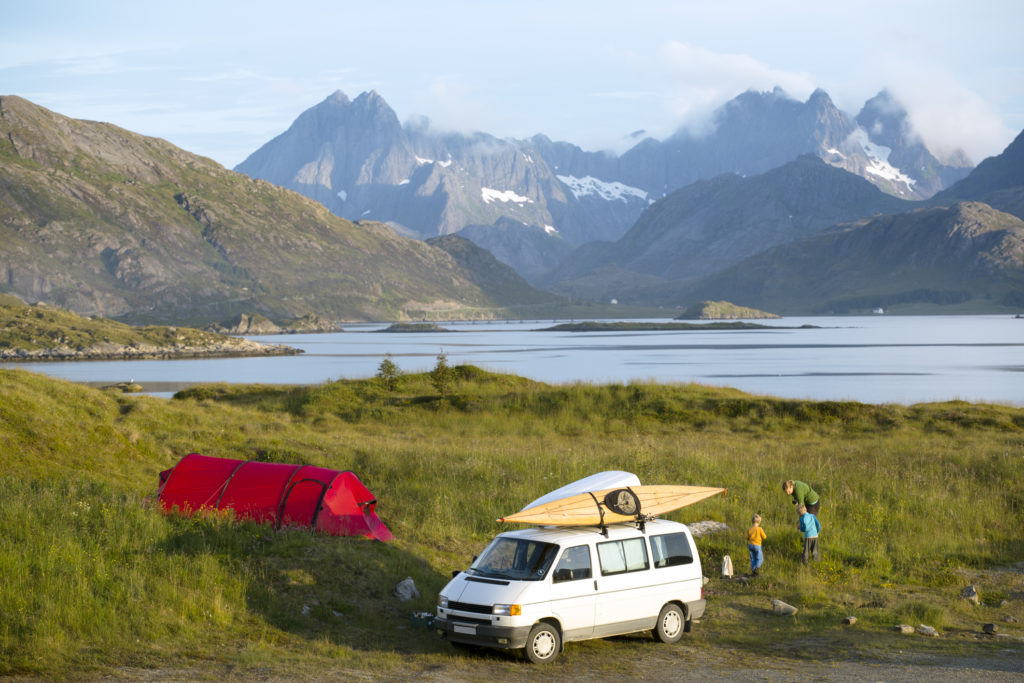
It’s Never Been So Hard to Get a Campsite—These Hacks Will Score You the Best Spot
Tips for both seasoned campers and first-timers.

Thomas J. Story
This article is part of our six-week, limited edition newsletter series, Last-Minute, Low-Stress Travel, which will give you the tips and trips to make all of your summer travels go smoothly. Travel editor Krista Simmons and other experts will walk you through everything from how to deal with common travel nightmares, how to save money on your next vacation, packing hacks, camping trip ideas, and more. Sign up here to get each installment straight to your inbox.
Travel has officially made its post-pandemic rebound. And camping is no exception. In fact, The Dyrt recently conducted a survey where campers said it was five times harder to find an available campsite in 2022 than it was pre-pandemic, making 2022 the most booked-up year ever. And this year is set to smash those numbers. But that doesn’t mean you have to stay home. There are tips, tricks, and hacks for how to get a campsite, even if it’s your first time camping.
Preethi Chandrasekhar, a travel writer and photographer based in Northern California who’s passionate about inspiring equity in the outdoors, shared some of her insider knowledge for securing a great spot this season, from which apps to use for booking to why you should consider BLM (Bureau of Land Management) sites and National Forests this season.

Thomas J. Story
1. Book Weekdays
“Popular destinations also have campsites available mid-week, or from Sunday through Thursday, so staying flexible is key,” says Chandrasekhar. “Consider booking your trip when school is back in session; not only do you still have some good weather left but you’ll also have lesser crowds.”
In general, the more flexible you can be with dates, the better off you’ll be. If you can take a day or two off mid-week, you’ll be rewarded with less crowding and easier booking.
Another tip is to consider backcountry trails. “You’ll likely need to go through the National Parks System to get a permit to camp,” says Chandrasekhar. “But it’s a great alternative to campgrounds with amenities like showers.”
2. Hop on the Apps
While you may want to cut off from technology and unwind when camping, leading up to the trip it can be your best friend. A new site called Campscanner launched, where campers can search for spots and set up alerts for sold-out campgrounds at National Parks and State Parks, receiving text notifications when a site becomes available. And there are plenty of other tried-and-true ways to book last-minute, too.
Chandrasekhar is a fan of apps like Hipcamp and Campspot. “I’ve used Campspot a few times to find some cute cabins in Redwood National Park,” she says. “Hipcamp features real-time availability of campsites for both public and private campgrounds, while Campspot is similar but is like an all-in-one booking service for an extensive collection of privately owned campgrounds. The places offered via Campspot can range from rustic ranches to family camping getaways. It’s also a great resource for RV campers.”
Campnab automatically scans National Park databases for cancellations and sends alerts in real time, too, so if you’re willing to be flexible that’s a great option. “Their service has a charge and you have to book immediately once you get the alert,” she says. “But you can set up alerts for multiple destinations, which is nice.”

Ren Fuller
3. Opt for National Forests
Sometimes it helps to go to National Forests instead of popular National Parks, which can get incredibly crowded during peak season, but are just as beautiful and worthy of exploration.
“There are approximately 154 national forests across the U.S., and most are accessible as almost every state has at least one,” she says. “Sierra National Forest in California is my absolute favorite. Did you know you can ride a logger steam train into this forest? It’s also home to the Ansel Adams wilderness area, which has fantastic hiking trails,” says Chandrasekhar. “You can also drive the 70-mile Sierra Heritage Scenic Byway that will give you a sense of all the sights as well.”
Some of Chandrasekhar’s favorites are: Inyo National Forest in California; Sawtooth National Forest in Idaho; Mt. Baker Snoqualmie National Forest in Washington; White Mountain National Forest in New Hampshire; Bridger-Teton National Forest in Wyoming; White River National Forest in Colorado; Salmon-Challis National Forest in Idaho; and Tongass National Forest in Alaska.

Johner Images/Getty Images
4. Get Busy Freecamping
Also known as boondocking or dry camping, many freecamping sites also happen to be gratis and don’t require a reservation, though some do require a small fee. We enjoy exploring BLM land as opposed to overcrowded National Parks, and so does Chandrasekhar, not only because they’re free, but because they’re much less crowded this time of year. You can use apps like The Dyrt to find BLM sites in the area you desire by using their map layers feature, making it great for road trips and impromptu overnights along the way.
“The advantage of going the BLM route is that you can just walk up to BLM land and set up your tent without needing reservations. It’s free, and usually in a stunning spot. So not only are you saving money, you also have front-row seats to epic views,” she says. “It’s also a chance to truly unplug as most of these places are very primitive with no cell service. BLM camping is advantageous if you just enjoy heading out on a whim over a weekend, without a plan or reservation.”
One thing worth noting is that you’ll need to be 100% self-sufficient, as most of these sites don’t have water, firewood, or amenities. And many sites do have limits on how long your stay can be, so be sure to check for posted signage on rules and regulations.
